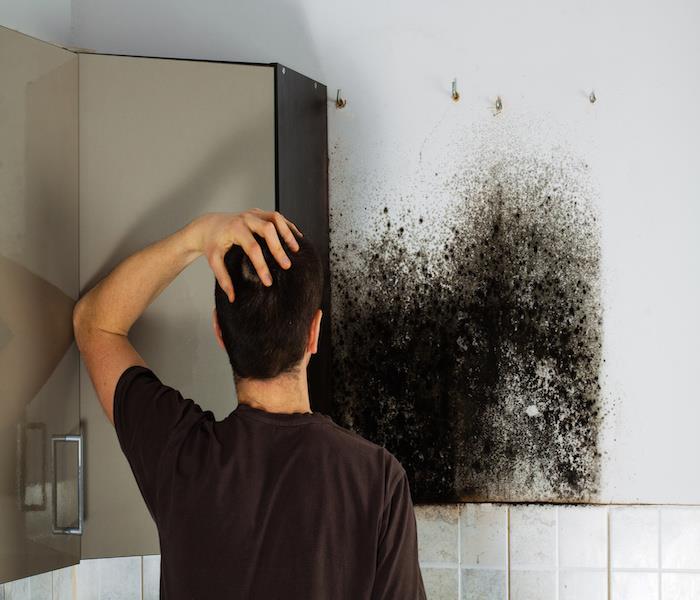What Causes Mold and How Can You Prevent It?
2/10/2016 (Permalink)
Being exposed to mold indoors can cause health effects, so it’s important that you know what causes mold and how to prevent mold from building up in you home, school, or office building.
What Causes Mold?
Mold can be found almost anywhere and it can grow on virtually any organic substance so long as moisture and oxygen are present. It can grow on wood, paper, carpet, food, and insulation. The cause of indoor mold is excessive moisture accumulating in buildings or on building materials especially if the moisture problem remains undiscovered or unaddressed for an extended period of time.
It’s impossible to eliminate all mold and mold spores in an indoor environment but indoor mold can be controlled by limiting the amount of moisture in the building. Moisture requires water to grow so preventing moisture problems from occurring inside buildings is of the utmost importance.
There are many causes of moisture problems including uncontrolled humidity. Some moisture problems have led to changes in building construction practices in the 1970s, 1980s, and 1990s. In some situations they’ve resulted in buildings being tightly sealed but this can cause problems too. A building too tightly sealed may lack adequate ventilation, which could potentially lead to additional moisture buildup.
Moisture problems could include roof leaks, landscaping or gutters directing water into or under the building and unvented combustion appliances. Delayed maintenance or insufficient maintenance has been associated with moisture problems occurring in schools and large buildings. It’s easy to accumulate moisture in less insulated buildings like portable classrooms and other temporary structures so these types of buildings are more susceptible to having mold problems.
Prevention
Since mold can grow almost anywhere and on just about any organic substance, it’s very difficult to prevent mold from growing. However, there are preventative steps you can take that will decrease your chances in having mold in your building.
Because moisture is the cause of mold, fixing leaky plumbing or any other leaks as soon as possible in the building will go a long way toward preventing the appearance of mold. Also watch for condensation spots or wet spots around the building. Make sure to fix the source of this moisture as soon as possible to reduce the chances of it turning into mold.
The best way to prevent mold from building up in your building is to prevent moisture from accumulating in the building. You can do this by increasing the surface temperature or reducing the moisture level, the humidity, in the air. To increase the surface temperature in the building, insulate or increase the air circulation throughout the building. You can reduce the moisture level in the air by repairing any leaks in the building, increasing the ventilation if the air is cold and dry outside, or dehumidifying if the air is warm and humid outside.
Make sure to keep heating, ventilation, and air conditioning (HVAC) drip pans clean, flowing properly, and unobstructed as this is another potential cause of mold growth in the building.
Hidden Mold
In some cases you could have hidden mold or indoor mold that may not be obvious. It’s possible that mold may be growing on hidden surfaces throughout the building such as the backside of drywall, wallpaper, paneling, the top of the ceiling tiles, or the underside of carpets and pads.
Possible locations where you could find hidden mold may be pipe chases and utility tunnels with leaking or condensing pipes, walls behind furniture where condensation can form, condensate drain pans inside air handling units, porous thermal or acoustic liners inside ductwork, or roof materials above the ceiling tiles which can be caused due to roof leaks or insufficient insulation.
There are some building materials like drywall with vinyl wallpaper or wood paneling that can act as vapor barriers that trap moisture underneath its surface providing a moist environment where mold can grow.
If your building smells moldy or you know there’s been water damage in the building, you may suspect mold is in the building even though you can’t see the source. If you start looking into hidden mold, it’s important to remember that investigating hidden mold may be difficult and will require caution. Be sure to always use personal protective equipment when investigating a potential mold problem.
If you think you have mold in your home, school, or office building, call the trusted professionals at SERVPRO to remediate the problem.






 24/7 Emergency Service
24/7 Emergency Service
